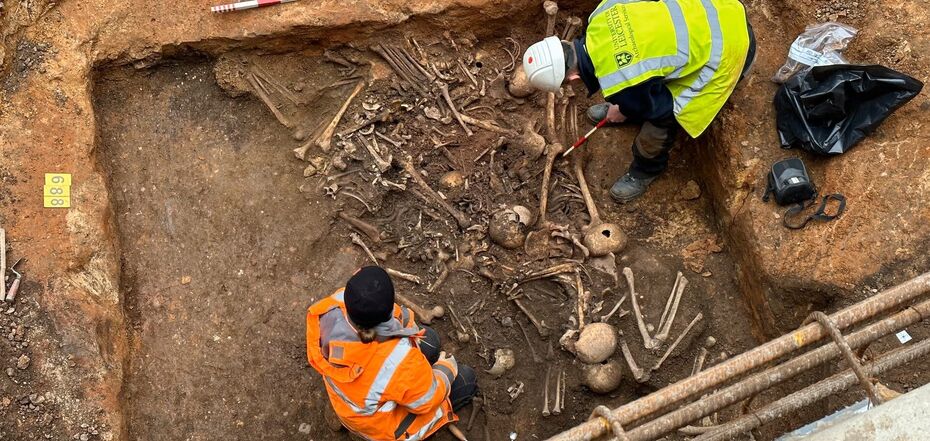
A 12th-century burial site with the bodies of 123 men, women, and children was discovered in England. Photo
In England, archaeologists have discovered a narrow vertical shaft filled with the remains of 123 men, women, and children. Research has shown that the bodies were dumped there more than 800 years ago, in the early 12th century.
This is one of the largest pit burials ever excavated in the UK. However, the reasons for burying the corpses in this tiny ancient mine remain a mystery, The Guardian writes.
The grave was found in the gardens a few meters from Leicester Cathedral. “There are no signs of violence on the bones, leaving us with two alternative causes of these deaths: starvation or epidemic. At this time, the latter is our main working hypothesis,” said Matthew Morris, project officer for archaeological services at the University of Leicester.
Excavations conducted by Morris and his colleagues show that the bodies were placed in the shaft in three deposits in rapid succession. “It appears that the carts of bodies were delivered to the shaft and then lowered into it. One load went on top of the other in a very short period of time. In terms of numbers, the people placed there probably accounted for about 5% of the city’s population,” the scientist suggested.
According to experts, the discovery of the mass grave gives researchers new facts about life in England more than eight centuries ago. “Other pit burials have been found in the region, but this is the largest,” Morris said.
The Anglo-Saxon Chronicles describes major epidemics and fevers, as well as high mortality from starvation in England from the mid-20th century to the mid-22nd century.
To find answers to the question of what caused the mass deaths, the team of scientists sent samples of the bodies in the pit to geneticists at the Francis Crick Institute in London to search for viruses, bacteria, or parasites that could have triggered the disease.
“This has clearly been a devastating outbreak that resonates with recent events, particularly the Covid pandemic. There was no evidence of clothing on any of the bodies. But there were signs that their limbs were still together, suggesting that they had been wrapped in shrouds. So their families were able to prepare these bodies for burial before someone from the central government took them away to take them to the pit,” said Matthew Morris.
The mass graves were discovered when it was decided to build a new heritage learning center in the cathedral. Twelve years ago, the body of Richard III was found under a nearby parking lot and then buried in the cathedral.
This burial led to a tenfold increase in the number of visitors. To cope with this influx, after a full archaeological study, the construction of a new center in the cathedral garden, a former burial ground, was approved, scientists say.
According to the researchers, a total of 1,237 men, women, and children were found in the garden, ranging from those buried in the nineteenth century to those buried in the early eleventh century.
“This is an uninterrupted sequence of 850 years of burials of the same population from the same site, and this does not happen often. This has generated a huge amount of archaeological excavation,” Morris added.
Interestingly, the research team found evidence of Anglo-Saxon dwellings beneath these burials, and a Roman shrine even lower down.


Comments (0)